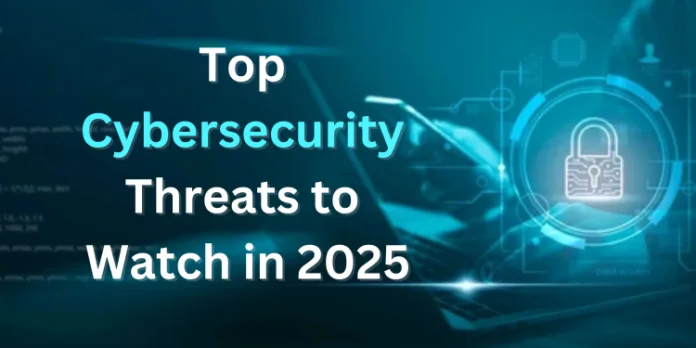As we dive deeper into the digital age, cybersecurity threats in 2025 have become more sophisticated, unpredictable, and damaging than ever before. With the expansion of smart devices, AI integration, and remote work, cybercriminals are leveraging advanced tactics to exploit vulnerabilities across all platforms.
Whether you’re a business owner, tech enthusiast, or everyday internet user, understanding the latest cybersecurity threats in 2025 is crucial to staying safe online. In this article, we’ll explore the top 10 most pressing cyber threats this year and offer practical tips to shield yourself and your data from digital attacks.
1. AI-Powered Phishing Attacks
Phishing has evolved dramatically. In 2025, cybercriminals use AI to craft hyper-personalized emails, messages, and even voice notes that mimic real people. These deepfake phishing tactics trick users into giving away sensitive information like passwords, bank details, and login credentials.
How to stay safe:
Always verify the source before clicking any link or downloading an attachment. Use multi-factor authentication (MFA) wherever possible.
2. Ransomware-as-a-Service (RaaS)
Ransomware has become a commercial product. Underground networks now offer Ransomware-as-a-Service to even low-skilled hackers, making attacks more frequent. Victims are locked out of their systems until a ransom is paid—often in cryptocurrency.
How to stay safe:
Keep regular data backups offline, patch systems promptly, and avoid downloading unknown files or software.
3. Zero-Day Exploits
A zero-day exploit takes advantage of unknown vulnerabilities in software before developers can patch them. In 2025, such attacks are increasingly used against critical infrastructure, banks, and cloud platforms.
How to stay safe:
Enable automatic updates on all devices and stay informed about security patches for the tools you use.
4. IoT Device Hijacking
From smart thermostats to wearable fitness trackers, Internet of Things (IoT) devices are everywhere. These often lack strong security features, making them easy targets for attackers looking to hijack devices and spy on users or launch larger botnet attacks.
How to stay safe:
Secure your Wi-Fi network, change default passwords on all smart devices, and keep firmware up to date.
5. Deepfake Impersonation
Thanks to AI, deepfakes are more convincing than ever. In 2025, scammers use video or audio deepfakes to impersonate CEOs, relatives, or colleagues—convincing targets to transfer funds or reveal secrets.
How to stay safe:
Be skeptical of unexpected video calls or messages, even if they look or sound familiar. Confirm identity through a second, verified channel.
6. Cloud Security Breaches
As businesses and individuals continue to store vast amounts of data in the cloud, attackers target cloud services to steal or leak sensitive data. Misconfigured cloud storage or weak access control are often the culprits.
How to stay safe:
Use strong passwords, apply least-privilege access controls, and regularly audit cloud storage settings.
7. Cryptojacking
Cybercriminals secretly install software on your devices to mine cryptocurrency. This slows down systems, drains resources, and can go unnoticed for months.
How to stay safe:
Monitor your device’s performance. Use antivirus software that detects cryptojacking attempts.
8. Social Engineering on Social Media
Hackers use social media to gather personal data and manipulate targets into revealing login details or falling for scams. The lines between legitimate and malicious interactions are increasingly blurred.
How to stay safe:
Limit what you share online and adjust privacy settings. Be cautious of unexpected friend requests or messages asking for sensitive information.
9. Insider Threats
Not all threats come from outside. In 2025, disgruntled employees or contractors are increasingly involved in data theft, sabotage, or unintentional breaches.
How to stay safe:
Implement strict access controls and monitor employee activities through secure IT protocols and training programs.
10. Quantum Computing Threats on the Horizon
Though still emerging, quantum computing could one day break traditional encryption methods. While this isn’t yet a mainstream issue, governments and enterprises are already exploring post-quantum encryption methods to prepare for future risks.
How to stay safe:
Stay updated on cybersecurity advancements and consider adopting quantum-resistant cryptography solutions in the coming years.
Conclusion
The landscape of cybersecurity threats in 2025 is evolving rapidly, with attackers using smarter tools and wider platforms than ever before. But staying safe online doesn’t require technical mastery—it requires awareness, vigilance, and smart digital habits.
By understanding these top threats and taking proactive steps to secure your digital presence, you can minimize your risk and navigate the connected world with confidence.
As we continue to integrate technology into every aspect of life, cybersecurity must remain a top priority for individuals, businesses, and governments alike.
